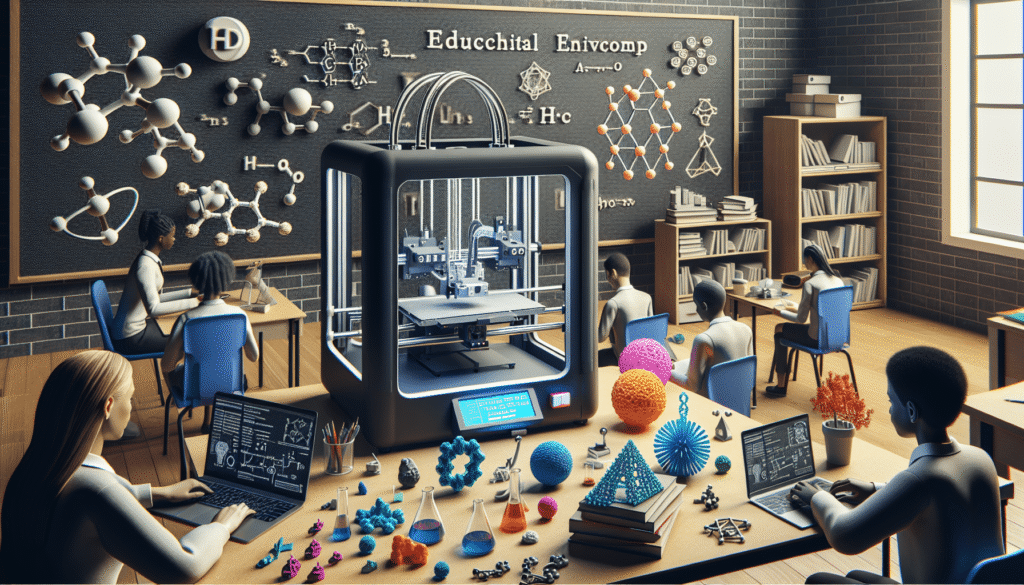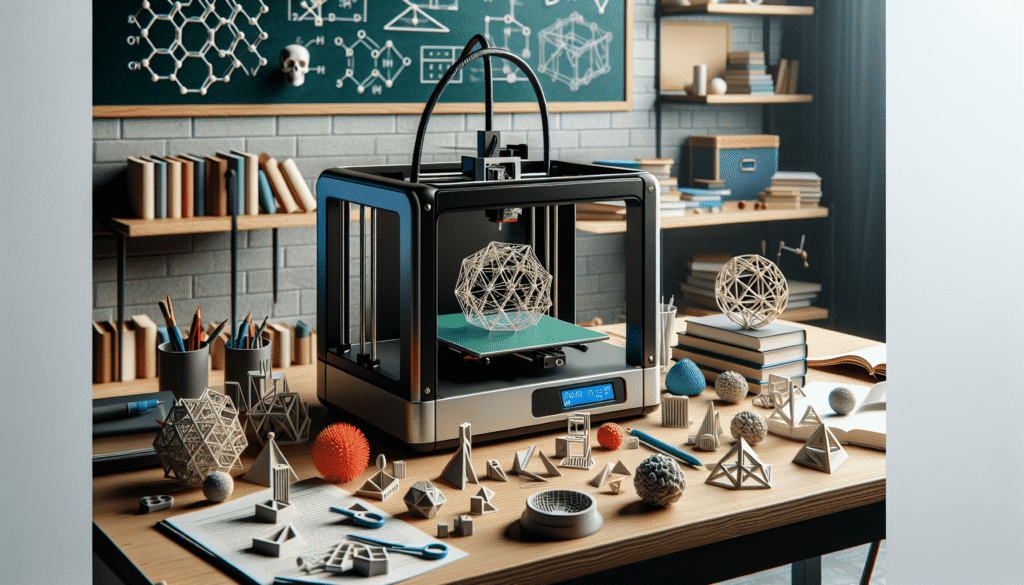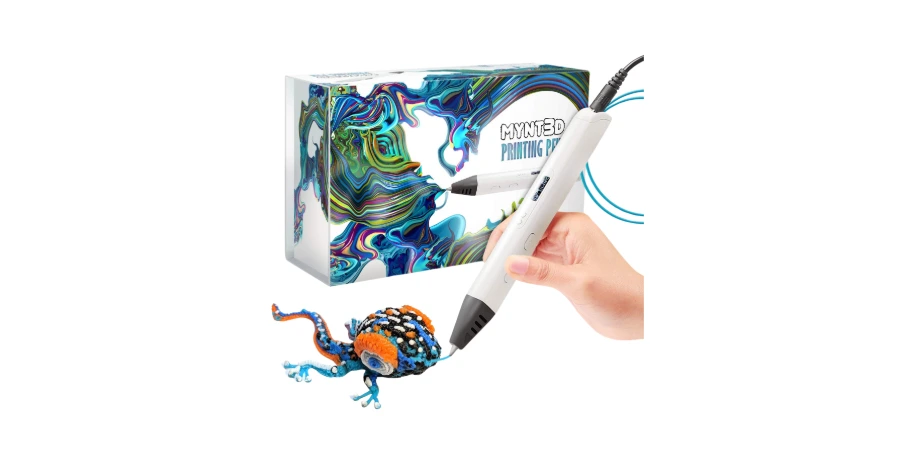Have you ever wondered how a 3D printer could revolutionize the classroom experience? It’s quite intriguing, isn’t it? The idea that a simple machine could transform lessons from abstract concepts into tangible models is something that’s becoming increasingly accessible. As someone who finds the fusion of technology and education fascinating, let me guide you through the wonders of 3D printing in educational settings and help you discover the best options for your classroom.

Why 3D Printing in Education?
Let’s start with the basics. Incorporating 3D printing into education can significantly augment hands-on learning experiences. It allows students to engage with subject matter in dynamic ways that traditional learning methods don’t always support. Imagine this: students designing a model of the solar system or prototyping their inventions—a process that involves creativity, problem-solving, and critical thinking.
Enhancing Engagement
First and foremost, 3D printing captivates students’ attention. It shifts learning from passive to active participation, making lessons more engaging. Students aren’t just reading about scientific concepts or mathematical theorems; they are bringing them to life. This active involvement can improve retention rates and spark curiosity.
Encouraging Creativity
Moreover, 3D printing opens avenues for creativity and innovation. Not only do students learn to conceptualize and design their ideas, but they also learn the process of iterating their creations. This iterative process is essential in fostering a growth mindset, teaching students to view failures as learning opportunities rather than setbacks.
Promoting Practical Skills
Furthermore, working with 3D printers equips students with practical skills that reflect real-world applications. They learn about design software, engineering principles, and manufacturing processes. In a technology-driven society, familiarity with these concepts is undoubtedly valuable.
Key Features to Consider
When searching for the best 3D printer for a classroom, it’s crucial to consider certain features that align with educational needs. Let’s break down some of the most important ones.
Ease of Use
Not every educator is a tech-savvy individual, and that’s perfectly fine. Look for printers that offer user-friendly interfaces. Features such as touchscreen controls, guided assembly, and intuitive software can significantly ease the learning curve for both educators and students.
Safety Features
In a setting where curious hands are always reaching to explore, safety cannot be compromised. Some essential safety features to consider include enclosed print areas to prevent accidental contact with hot components and non-toxic filament options to avoid exposure to harmful chemicals.
Print Quality and Speed
Depending on the educational focus, print quality might vary in importance. For subjects focusing on intricate details, like architecture or biology, high-resolution printers are ideal. However, if the goal is to produce prototypes quickly, speed might take precedence over detail.
Reliability and Support
Lastly, consider the reliability of the printer and the manufacturer’s customer support. Consistency in performance ensures that the device serves its educational purpose without frequent downtimes. Similarly, having access to a helpful support team can make troubleshooting considerably less frustrating.
Top 3D Printers for Educational Use
With a wide variety of 3D printers on the market, selecting the right one can be overwhelming. Based on feedback from educators and specifications that meet classroom needs, here are some top recommendations.
1. FlashForge Finder
The FlashForge Finder stands out as an excellent entry-level printer for schools.
| Feature | Details |
|---|---|
| Print Volume | 140 x 140 x 140 mm |
| Ease of Use | Highly user-friendly with a touchscreen interface |
| Safety | Enclosed print chamber for safety |
| Price | Budget-friendly, perfect for schools |
Its ease of use, alongside safety features like an enclosed build area, makes it suitable for younger students. With a price that won’t break the school budget, it’s a popular choice among educators.
2. Dremel Digilab 3D45
The Dremel Digilab 3D45 is another fantastic option, especially for high schools or colleges focusing on more advanced projects.
| Feature | Details |
|---|---|
| Print Volume | 254 x 152 x 170 mm |
| Material Support | PLA, Nylon, PETG, Eco-ABS |
| Connectivity | Cloud-enabled with Wi-Fi and USB |
| Reliability | Highly praised for consistent performance |
This model supports a wider range of materials and is compatible with more advanced printing tasks. Its cloud-enabled capabilities allow teachers to manage projects remotely, a feature that’s particularly useful in distance learning scenarios.
3. MakerBot Replicator+
When reliability and ease of use are top priorities, the MakerBot Replicator+ is worth considering.
| Feature | Details |
|---|---|
| Print Volume | 295 x 195 x 165 mm |
| Print Quality | Industry-leading with high precision |
| Educator Resources | Comprehensive support with ready-to-use lesson plans |
| Speed | Fast printing capabilities for quick turnaround |
With a highly regarded performance record and access to MakerBot’s education resources, this printer offers a premier experience for both teachers and students.
Tips for Successful 3D Printing in Classrooms
Implementing 3D printing in classrooms can be incredibly rewarding, but it does come with its set of challenges. Here are some tips to ensure a smooth experience.
Start with Simple Projects
It’s beneficial to initiate the journey with simple, straightforward projects that can be completed quickly. This introductory approach helps build confidence early on and eases students into the complexities of 3D design.
Involve Students in the Process
Invite students to participate in the setup and maintenance of the printer. Having a sense of ownership can enhance their appreciation of the technology and prolong their interest.
Foster Collaboration
Encourage collaborative projects that require input from multiple students. This not only divides the task load but also mirrors professional environments where teamwork is essential.
Keep Learning
The field of 3D printing is rapidly evolving, with new materials and technologies regularly emerging. Stay updated with the latest trends and continuously seek professional development opportunities to enhance your skills.

How to Integrate 3D Printing Across Subjects
3D printing’s benefits extend beyond STEM subjects. Let’s explore how this technology can be integrated across various disciplines.
Science
In science classes, 3D printing can be used to create models of molecules, cells, or anatomical systems, enabling students to examine structures in detail. By visualizing these components, learners gain a deeper understanding of scientific concepts.
Mathematics
For mathematics, consider utilizing 3D printers to construct geometric shapes or to demonstrate formulas and equations in a tangible manner. This hands-on experience can demystify complex calculations and enhance spatial awareness.
History
History classes can use 3D printing to replicate historical artifacts or create dioramas. This approach allows students to examine cultural and historical context more intimately, sparking a greater connection to the past.
Art and Design
In the arts, 3D printers can be tools for sculpture, architecture, and design projects, letting students bring their artistic visions to life. This not only bolsters their creative talents but also develops technical skills in design software.
Future Prospects of 3D Printing in Education
Looking forward, the prospects of 3D printing in education appear remarkably promising. As the technology continues to evolve, it’s likely to become an integral part of the curriculum across various grade levels.
Customized Learning Experiences
With more advanced technology, 3D printing could allow for customized learning experiences tailored to individual student needs. By adapting projects to varying skill levels, educators can provide personalized support.
Increased Accessibility
As costs decrease and technology becomes more accessible, even more schools will be able to adopt 3D printers. This democratization could bridge educational divides and ensure that all students have access to this transformative tool.
Interdisciplinary Opportunities
Finally, the potential for interdisciplinary projects continues to expand. Schools might see collaborations between departments, each leveraging 3D printing for diverse curricular purposes—mathematics meeting art, science teaming with history.
Conclusion
Transitioning into the world of 3D printing for educational purposes might seem daunting at first, but the rewards are well worth the effort. By choosing the right printer and implementing thoughtful strategies, educators can create an environment that fosters innovation, engagement, and real-world skills. This journey might require patience and adaptation, but imagine a classroom buzzing with ideas, curiosity, and the hum of a printer creating something from nothing. That, to me, is the essence of learning.

